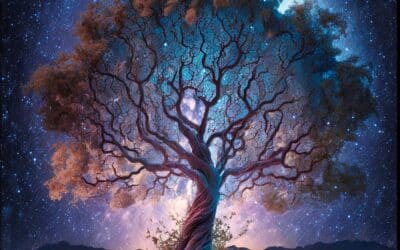As technology continues to advance, so does the world of digital art. Spanning across various media and disciplines, digital art has evolved from its humble beginnings into a complex and ever-expanding field that continues to challenge the traditional boundaries of art. In this article, we will embark on a journey through time, exploring the key milestones and significant developments that have shaped the digital art landscape as we know it today.
The Dawn of Digital Art: Early Experiments (1960s-1970s)
The roots of digital art can be traced back to the 1960s when artists and computer scientists began exploring the creative potential of computers. Early pioneers like Frieder Nake and Georg Nees used algorithms and computational processes to generate geometric shapes and patterns, laying the foundation for what would later become known as computer-generated art. These first steps marked a significant shift in the way artists approached their work, as they began to consider the computer not just as a tool, but as a creative partner.
During the 1970s, artists like Vera Molnar and Harold Cohen started experimenting with computer-controlled drawing machines, producing intricate, mathematically inspired artworks. This period also saw the emergence of early computer animation, as artists like Lillian Schwartz and John Whitney explored the possibilities of moving images through computers.
The Rise of Personal Computers and Software (1980s)
The 1980s marked a turning point for digital art, as personal computers became more accessible and affordable. Artists began to embrace software like Adobe’s Illustrator and Photoshop, which allowed for greater control and precision in their work. The introduction of the Apple Macintosh in 1984, with its user-friendly graphical interface, further democratized access to digital art tools.
This period also saw the rise of pixel art, a distinctive style characterized by the use of low-resolution images and limited color palettes. Early video games, such as Pac-Man and Space Invaders, played a significant role in popularizing pixel art, and it soon became an iconic aesthetic of the digital age.
The Internet and the World Wide Web (1990s)
The advent of the internet and the World Wide Web in the early 1990s had a profound impact on digital art. Artists began to experiment with new forms of expression and collaboration, creating net art, interactive installations, and virtual reality experiences. Web-based platforms like DeviantArt and Newgrounds emerged, providing a space for artists to share their work and receive feedback from a global audience.
During this time, digital photography also gained traction, with the release of the first consumer-grade digital cameras. This development made it possible for artists to manipulate and create digital images without the need for film or a darkroom, paving the way for the widespread adoption of digital photography.
The Convergence of Art and Technology (2000s)
In the 2000s, the line between art and technology became increasingly blurred, as artists began to experiment with emerging technologies like 3D printing, motion capture, and artificial intelligence. This period saw the development of digital sculpting tools like ZBrush, which allowed artists to create detailed, three-dimensional models and designs.
The rise of social media platforms like Facebook, Instagram, and Twitter also played a significant role in shaping the digital art landscape. These platforms offered new opportunities for artists to showcase their work, collaborate, and connect with audiences in ways that were previously unimaginable.
Digital Art in the Age of Blockchain and NFTs (2010s-Present)
The most recent development in digital art has been the emergence of blockchain technology and non-fungible tokens (NFTs). These innovations have introduced new ways to authenticate, sell, and collect digital art, addressing long-standing issues around ownership, copyright, and value in the digital realm. NFTs have gained significant attention in recent years, with high-profile sales and celebrity endorsements bringing digital art into mainstream consciousness.
Digital artists have embraced the potential of NFTs to create unique, collectible pieces that can be bought, sold, and traded on various online platforms. This has led to a burgeoning digital art market, with new artists emerging and established artists exploring the possibilities of tokenizing their work.
The integration of augmented reality (AR) and virtual reality (VR) technologies into digital art has further pushed the boundaries of the medium. Artists are now creating immersive, experiential artworks that transport viewers into virtual worlds or overlay digital elements onto the physical environment. These technologies have the potential to redefine how we engage with and experience art in the coming years.
The Impact of the Pandemic on Digital Art
The global pandemic of the early 2020s has had a significant impact on the art world, with physical galleries and museums forced to close their doors for extended periods. In response, digital art has taken on a new level of importance, with artists and institutions turning to virtual exhibitions, online galleries, and livestreamed events to share their work.
This shift has accelerated the adoption of digital art, as both creators and consumers have sought new ways to connect and engage with art in a socially-distanced world. It has also highlighted the potential of digital platforms and technologies to democratize access to art, making it more accessible to a wider audience than ever before.
Conclusion
The evolution of digital art has been a remarkable journey, marked by constant innovation and the breaking down of traditional artistic boundaries. From the early days of computer-generated art to the rise of NFTs and immersive technologies, digital art has consistently pushed the limits of what is possible and challenged our understanding of what art can be.
As we look to the future, it is clear that digital art will continue to evolve and adapt to new technologies and cultural shifts. With the rapid pace of technological advancements and the growing acceptance of digital art as a legitimate art form, the potential for further growth and exploration in this exciting field is virtually limitless.


